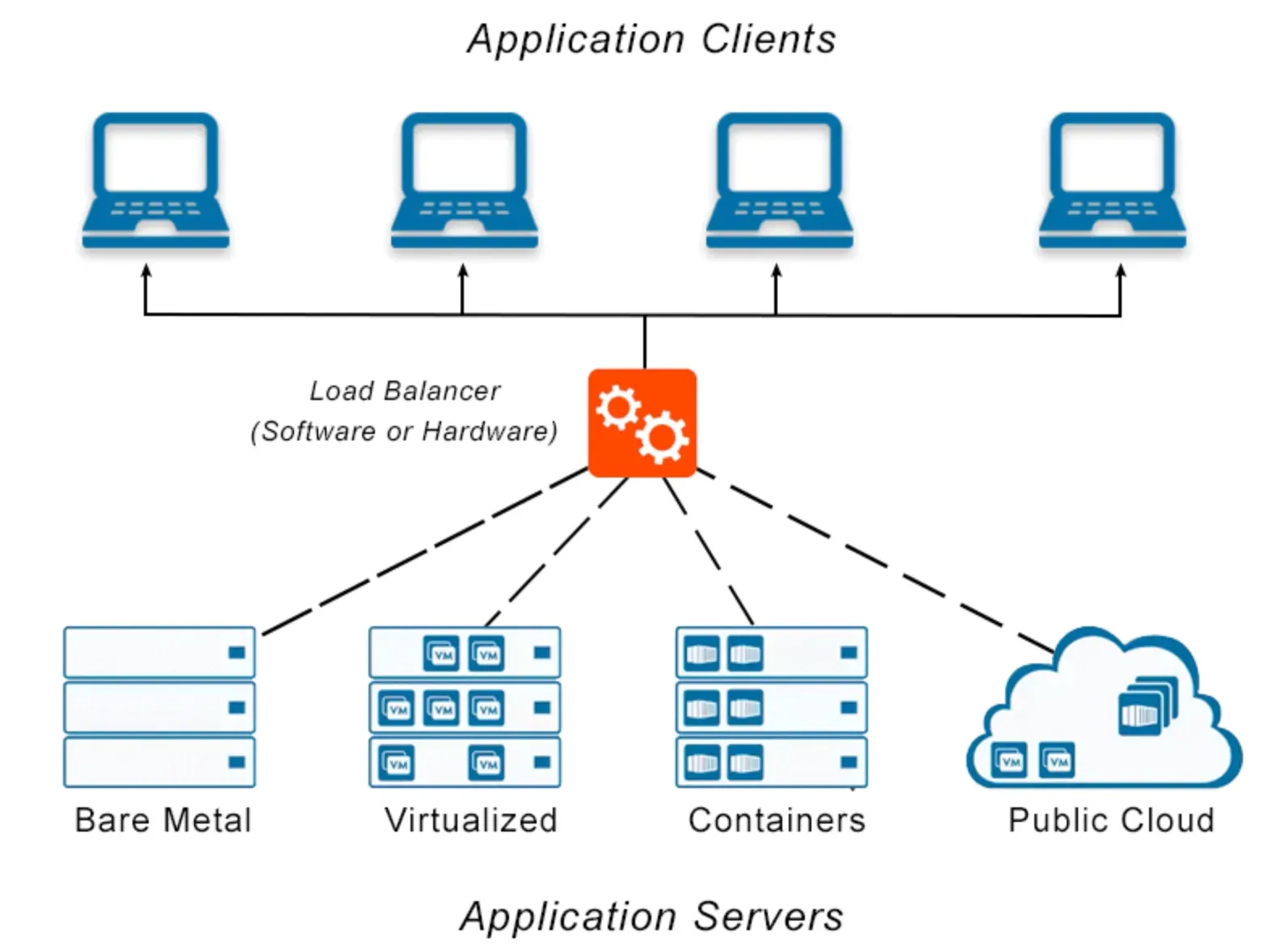What is Load Balancing?
Load balancing refers to the process of distributing network traffic evenly across multiple servers to ensure that no single server bears too much load. This ensures optimal performance and maximizes availability.
In high-traffic environments, load balancing is key to maintaining response times and ensuring a smooth user experience. It also provides redundancy, reducing the risk of single-point failures and enhancing overall system reliability.

Load balancing works by accepting incoming network traffic and distributing it to one of many backend servers, typically using one of several algorithms to determine the best destination server.
The actual work of routing incoming traffic to prevent any server from getting overloaded is done by a device (which could be hardware, software, or a combination) known as a load balancer.
Key Components of Load Balancing

Load Balancer Algorithms
Load balancer algorithms determine how traffic should be distributed among servers. Common algorithms include Round Robin, Least Connections, and IP Hash.
Backend Servers
Backend servers are the physical or virtual servers that handle the requests forwarded by the load balancer.
Health Checks
Health checks monitor the servers' availability and performance to ensure they are in an optimal state to handle requests. If a server doesn't pass a health check, the load balancer stops sending it traffic until it recovers.
Session Persistence
Sometimes connections need to be maintained between a client and a specific server. Features like session persistence or sticky sessions ensure that a client keeps connecting to the same server instead of randomly being sent to another one.
Types of Load Balancing

Network Layer Load Balancing
Network Layer Load Balancing, or L4 Load Balancing, operates at the transport level of the network. It balances traffic based on network parameters like IP address and TCP port numbers.
Application Layer Load Balancing
Also known as L7 Load Balancing, this works at the highest level of the network. It includes more complex, application-specific metrics like HTTP headers, cookies, or even specific URL structures.
Global Server Load Balancing (GSLB)
When implemented across multiple geographical locations, load balancing becomes Global Server Load Balancing. It directs traffic based on the health and location of data centers, as well as user-defined policies.
Hybrid Load Balancing
In some scenarios, both L4 and L7 load balancing may be utilized in a hybrid approach. This combination provides both simplicity and flexibility to address complex traffic distribution needs.
Load Balancing Algorithms

Round Robin
Round Robin is a basic algorithm that evenly distributes connections to each server in order. While simple, it doesn't account for the actual load of each server.
Least Connections
This algorithm sends new connections to the server with the fewest established connections. It's an intelligent choice when servers have varying capacities.
IP Hash
The IP Hash algorithm creates a hash of the client's IP address and uses it to direct traffic. This allows session persistence, ensuring a specific client always accesses the same server.
Weighted Distribution
With a weighted distribution algorithm, servers are assigned a weight based on their capacity. Those with higher weights receive a proportional amount of traffic.
Benefits and Challenges of Load Balancing

Improved Availability
By distributing traffic, load balancing prevents central points of failure, improving the reliability of applications and services.
Scalability
As demand increases, more servers can be added and integrated into the load balancing scheme, offering scalability for growing businesses.
Efficiency
Load balancing gets the best use out of all available resources, improving overall system efficiency and preventing any singular server from being overwhelmed by requests.
Complexity
Despite these benefits, load balancing adds another layer of complexity to network infrastructure. This requires careful management to ensure good outcomes.
Load Balancing in Other Applications

Cloud Environment
In a cloud environment, load balancing takes on a dynamic character due to the virtual and mutable nature of the servers. Scalability becomes even more prominent as instances can be created and destroyed as demand changes.
Content Delivery Networks
In Content Delivery Networks (CDNs), load balancing helps distribute workloads across multiple servers and data centers worldwide, improving user experience by serving content from the nearest location.
Database Load Balancing
To optimize querying and ensure databases do not get overwhelmed, database load balancing distributes reading and writing operations among a group of servers.
Microservices Architecture
In the modern microservices architecture, where applications are made of many smaller and independent services, load balancing becomes critical to ensure effective communication and resource use among these services.
Frequently Asked Questions (FAQs)
What is load balancing and why is it important?
Load balancing distributes network traffic across multiple servers to ensure that no server becomes overwhelmed. It is crucial in maintaining response times, enhancing system reliability, and improving overall user experience.
How does a load balancer work?
A load balancer accepts incoming network traffic and distributes it to several backend servers. Using a selected algorithm, the load balancer determines the best destination server for each connection.
What are the common load balancing algorithms?
The most common algorithms include Round Robin, Least Connections, IP Hash, and Weighted Distribution, each with its benefits and best use cases.
How does load balancing improve system efficiency?
By balancing the workload, no single server gets overwhelmed, allowing maximum performance from each server. This equates to high efficiency and better resource utilization in the system.
How is load balancing used in applications like CDNs and Cloud environments?
In CDNs, load balancing distributes workloads across various servers and data centers worldwide. In cloud environments, load balancing is essential for managing the mutable nature of virtual servers and allowing better scalability.

